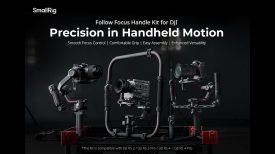
Panasonic has certainly taken aim and fired a shot across the bows of Canon, Sony, Panasonic and Blackmagic, with the unveiling of the AU-EVA1. While it may not wear the Varicam badge it certainly does borrow on a lot of the technology from Panasonic’s flagship cameras.
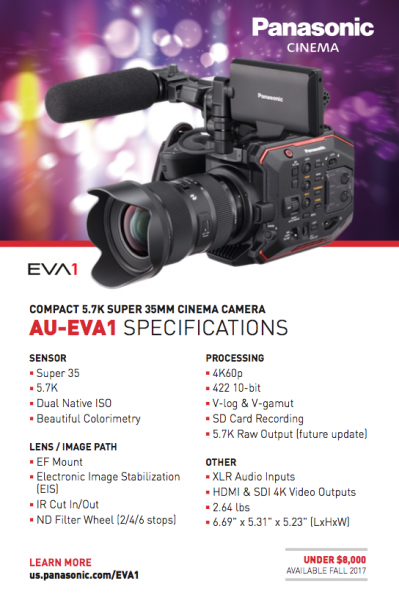
I’m personally very excited by this announcement. Panasonic have certainly done their homework and come up with a camera that, on paper at least, ticks a lot of boxes.
Weight, what weight

The AU-EVA1 has been designed to sit between the GH5 and the VariCam LT, and it offers a lot of the performance of the Varicam LT, in a smaller, more lightweight body. With the camera body weighing in at 1.2kg (2.65lb) it is only 475g (0.93lb) heavier than the GH5 with battery and memory card. The Sony FS5 (body only) is still lighter at 0.827kg (1.82lb).
The EVA1 offers a lot of features that are not found in other cameras at this price point. Not only does it use a large 5.7K Super 35mm-sized sensor to downsample for 4K, UHD, 2K, HD, and even 720p capture, but it also has a Dual Native ISO just like the Varicam 35 and Varicam LT. What those two Dual Native ISOs end up being is yet to be determined by Panasonic. On the Varicam 35 and LT they are 800 and 5000 ISO.
How can a camera have two base ISO ratings you ask?
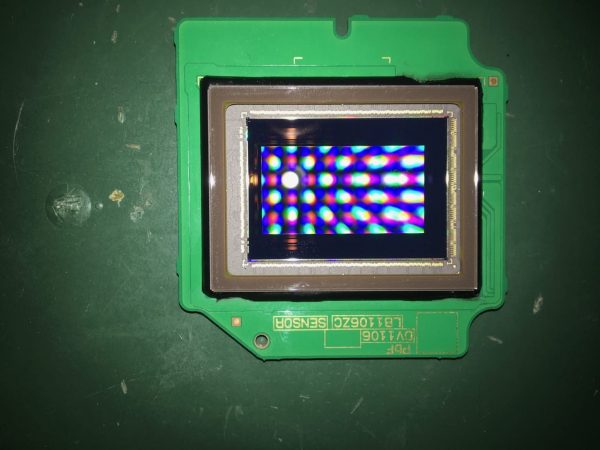
Basically there are two analog circuits right after each pixel before the gain amp, one for each ISO value. This allows for two “native,” very clean settings. For example, on the Varicam 35 and LT, in one mode there is a native ISO of 800 and when you switch to another setting the camera clicks over to its other native ISO of 5000. This keeps the signal-to-noise ratio the same and allows you to shoot remarkably clean images in low light conditions. The noise present at 5000 ISO is nearly identical to that at 800. It’s coming directly from the sensor, so it’s not simply a case of boosting the gain and erasing the noise. One of the reasons Panasonic has done this is to allow for high framerate capture in lower ambient light.
No camera shake
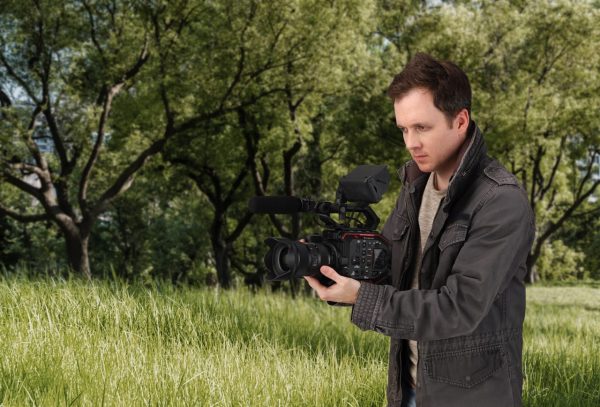
Again Panasonic is pushing the boundaries by incorporating Electronic Image Stabilization (EIS) in the camera body itself. This can be turned on or off and when it is engaged it is claimed to compensate for camera shake and blurring of the image. This is the first time to my knowledge that a proper professional digital cinema camera has featured EIS. There have been plenty of consumer grade camcorders that have had anti-shake technology built in so it will be interesting to see how well Panasonic’s system works on the EVA1. For run and gun and documentary shooters using a camera with built-in image stabilisation makes a lot of sense.
Native EF-mount
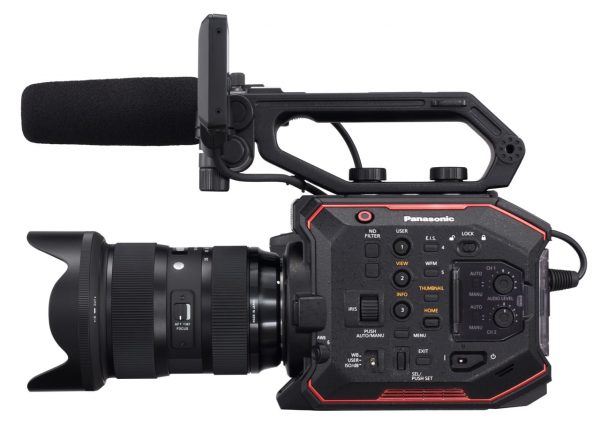
It is good to see Panasonic finally move away from Micro 4/3 mount sensors at this price point, and incorporate the Canon EF mount. While not as versatile as the Micro 4/3 or Sony E-mount, Canon EF lenses have proven to be very popular with a lot of shooters. Unfortunately, unlike the Varicam 35 and LT it doesn’t look like other lens mounts are available. According to Panasonic they are looking into whether Canon’s IS lens functionality will work on the EVA1, but at this stage it currently doesn’t.
IR Cut filter at the push of a button
Not only does the EVA1 have an integrated ND filter wheel in 2, 4, and 6 stops, but you can simply press a button and the IR cut filter swings away. This is the first camera I know of that has had this capability built in. With the IR cut filter out you can capture subjects such as nocturnal wildlife in extreme darkness, or replicate photographic effects. Panasonic are no strangers to doing this, as both the Varicam 35 and LT come with a detachable IR cut filter.
A company that understands codecs
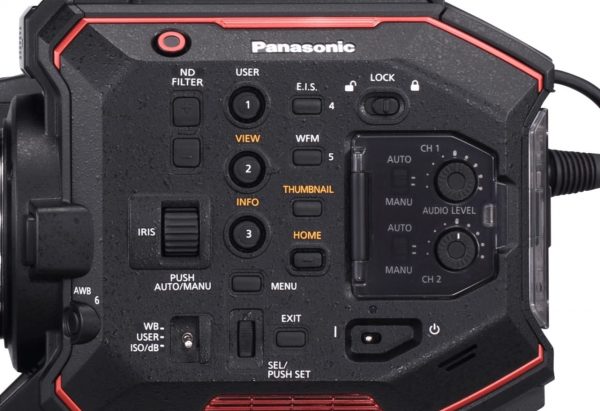
Let’s face it, Panasonic gets it when it comes to codecs. They know people want to record in a good colour space, at a decent bitrate, and so they put codecs in cameras that people want. Just like the GH5, the EVA1 will be able to record 10-bit 422 at up to 400Mbps, even in 4K, to affordable SDXC cards. In my opinion internal recording is where Canon missed the boat with the C200. In 2017 there is absolutely no reason why camera companies can’t offer 4:2:2 10-bit internal recording in their cameras. Panasonic sell a lot of cameras to television stations and they understand the importance of having codecs in their cameras that meet broadcast specifications. Not having to use an external recorder to record to a broadcast friendly codec is a big deal, especially when you want to keep your camera light and compact.
RAW output to external recorders
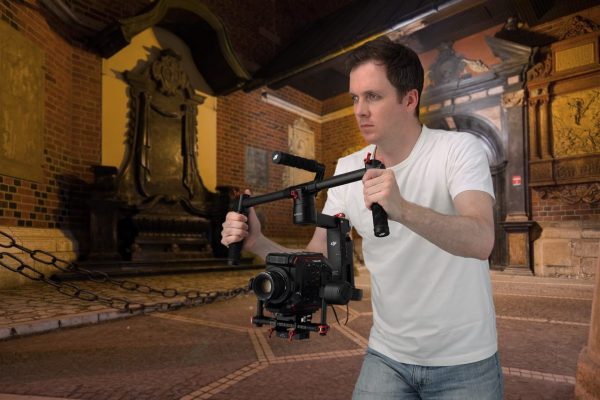
If you need higher recording quality than the EVA1 can manage internally, the camera will be able to output a 5.7K RAW signal to third party recorders through a future firmware update. While the camera can’t record RAW internally like the Canon C200 or Blackmagic Ursa Mini Pro, it’s nice to see it on Panasonic’s roadmap. It is unclear at this stage whether this firmware upgrade will be free or a paid option.
High frame rates
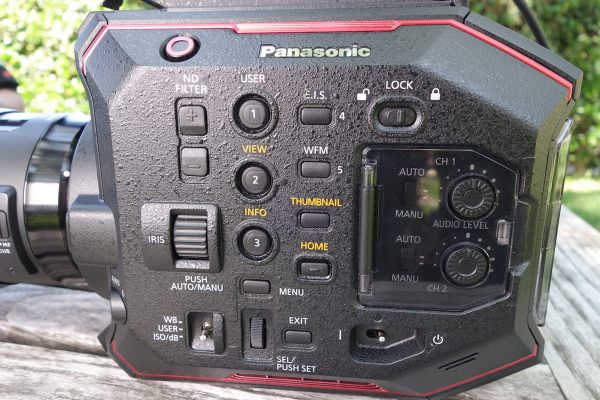
The EVA1 can shoot in 4K DCI or UHD at up to 60P and in 2K or HD at up to 240fps. It is unclear whether the high frame rates will only be available with a crop of the sensor. I would imagine that it will crop the sensor as this is what happens on the much more expensive Varicam LT.
V-Log/V-Gamut
It is no surprise that the EVA1 features the V-Log log curve and V-Gamut, just like the Varicam 35 and LT. Panasonic claim that their V-Log curve is very reminiscent of negative film and from personal experience using the Varicam LT I have found that it works very well. Panasonic are known for producing cameras that deliver very accurate colours and good skin tone rendition, and there is no reason to think the EVA1 will be any different.
Form factor
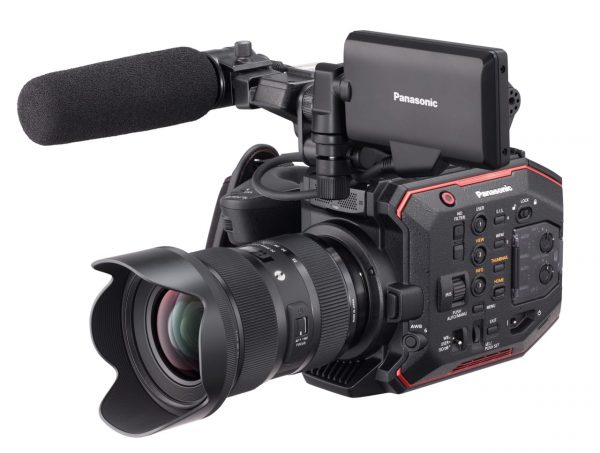
I’m not a huge fan of the form factor of the EVA1, but then again, I’m not a fan of any of the other competing cameras’ ergonomics either. The EVA1 looks like a cross between a Sony FS5 and a Panasonic DVX200. The camera also has a removable handgrip, and Panasonic have designed the camera so it can stripped down easily for use on drones or gimbals. There will also be numerous mounting points and Panasonic is currently working with accessory makers to allow further customization.

The buttons do look like they are all conveniently located, but what concerns me is that the camera doesn’t have an EVF. The only way you can see your images is via the inbuilt LCD screen that is mounted off the top handle. If it is similar to the screen from the DVX200 then it is not that easy to see in bright conditions, and you are going to have to use a loupe or a third party EVF. As a shooter my eyes aren’t as good as they used to be and I want to actually look at my images through a EVF and not a small LCD screen.
Audio
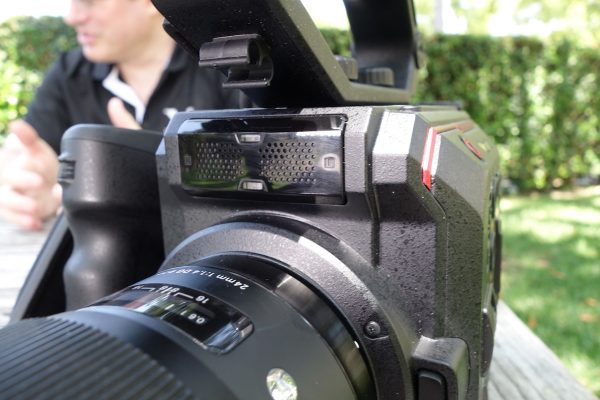
The camera has two balanced XLR inputs that are located on the back of the camera. The physical audio controls ae on the side of the camera in a similar position to where they are located on the DVX200. If you want to use the camera on a gimbal without a top mic the EVA1 has a built in stereo microphone.
The competition
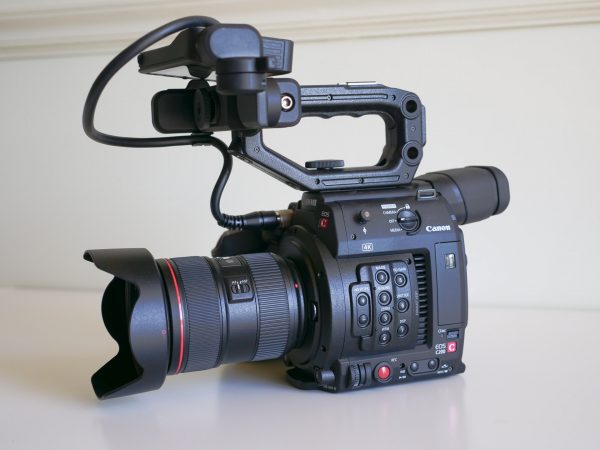
Clearly this camera is in direct competition with the recently announced Canon C200, the Sony FS5, Sony FS7/FS7 Mk II, and the Blackmagic URSA Mini. All of these cameras are very capable of producing good results in the right hands. While the specifications of all these cameras vary, they are all aimed at the same audience. Competition is always healthy and in the sub $10,000 US market there are now so many choices. On paper at least, the Panasonic EVA1 looks to offer a lot of bang for your buck. It has a host of features that its competition doesn’t, and it’s good to see a company release a camera that looks to be unique in this price bracket.
Who is it aimed at?
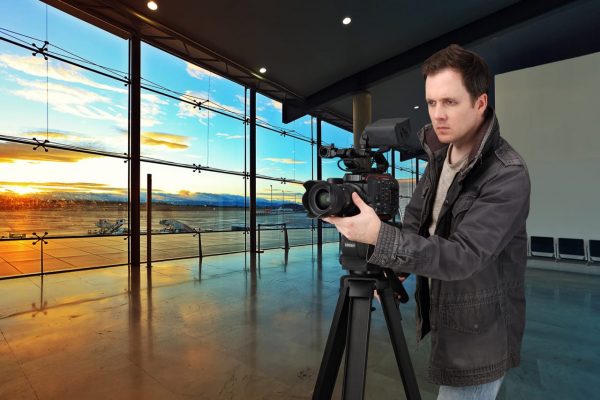
At under ‘$8,000 US’ the EVA1 is being squarely targeted at shooters who want to shoot on something better than a DSLR or mirrorless camera, but don’t have the funds to splurge on something like a Varicam LT, Sony F5, or Canon C300 Mark II. The under $10,000 US market is where the sales are for companies trying to sell professional digital cinema cameras. The EVA1 sits squarely in this realm, and I can see it being used by a vast range of shooters covering everything from documentary, run and gun news, events and weddings, all the way up to indie and short films. The EVA1 also looks to be a great camera to use along with either the GH5 or Varicam LT if you already own one of those.
Final thoughts
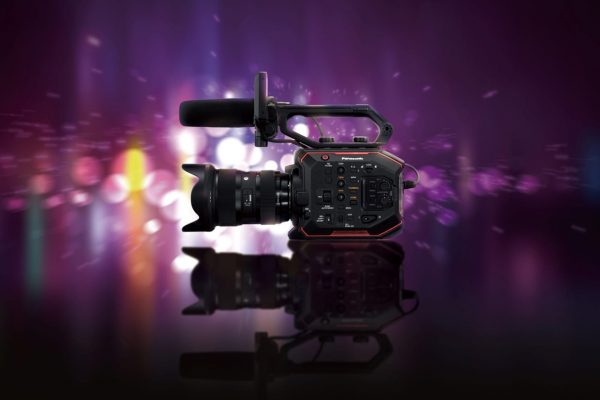
On paper at least the EVA1 looks to be an impressive offering from Panasonic with a price tag in line with its competition. It offers a host of features that other cameras in its class don’t have, and most importantly it allows you to shoot to a decent codec in a good colour space, internally, to affordable media. While I’m not overly fussed by its design, it is very light and compact. I love the Dual Native ISOs, the EIS, the ability to quickly be able to shoot IR, and the recording options. Let’s just hope that the imagery is as good as the specifications.
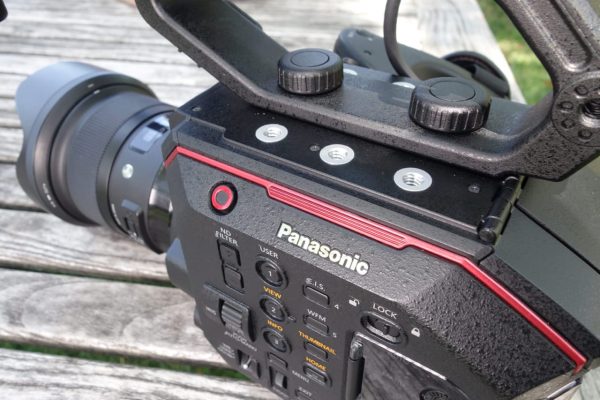
What do you think about the Panasonic EVA1? Is it the camera you have been waiting for? Is it enough to tempt you away from Canon or Sony? Let us know in the comments below.



